While there are a few red breeds, red and white cows are common. They come in various patterns, including red with white stripes, red with white markings, and red with white patches.
More times than not, red and white cows are mostly beef breeds, but some are also excellent milk producers. They are hardy, highly adaptable, and long-lived. So, as a farmer, you may not have to worry too much about replacement costs.
In this article, we will review seven red and white cow breeds. In our review, we will go over their origins, physical attributes, temperament, and uses.
Table of Contents
Belted Galloway
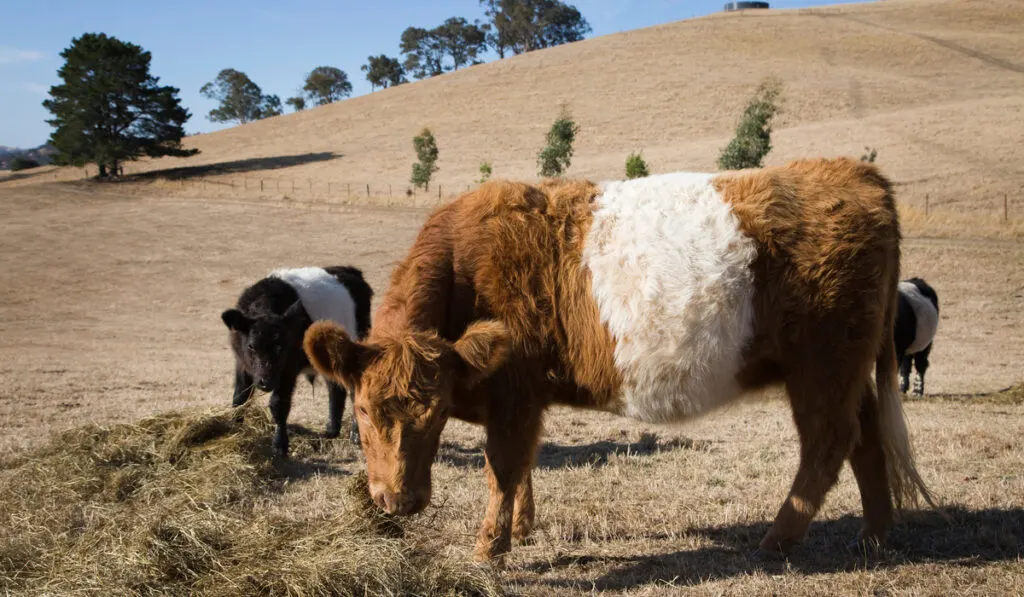
The Belted Galloway is a beef cattle breed indigenous to Galloway in the Southwest of Scotland. Members of this breed are well-adapted to the windswept moorlands and poor upland pastures of their native environment.
Belted Galloway Cattle coats come in several colors, including red, black, or dun, with a white strap encircling their body. The white belt varies in width. But it usually covers most of their body, from their shoulders to their hooks.
The Belted Galloway is naturally polled. Their outer coat is coarse, and this allows them to shed water readily. The soft undercoat of Belted Galloway Cattle provides them with the waterproofing and insulation to survive the winter.
Belted Galloway Cattle are medium-sized. At maturity, a Belted Galloway Bull weighs an average of 1697-1873 pounds, while cows weigh around 992-1488 pounds.
As a beef cattle breed, Belted Galloway is reared mainly for meat production. Members of the breed are generally large, hardy, and docile. They are also healthy and durable animals with high resistance to pinkeye.
Hays Converter
The Hays Converter is indigenous to Alberta, Canada. It was named after Harry Hays, the politician/agriculturist that developed this breed.
Hays Converter Cattle have black or red coats with white markings. They also have markings on their underbelly, legs, and faces.
Hays Converter Cattle are generally large-sized. At maturity, bulls weigh an average of 2310-2799 pounds, while cows weigh around 1250-1499 pounds.
Hays Converter Cattle are raised primarily for meat production. However, they are also excellent milk producers. The Hays Converter is a hardy cattle breed and has adapted well to the conditions of its native environment.
Australian Braford Cattle
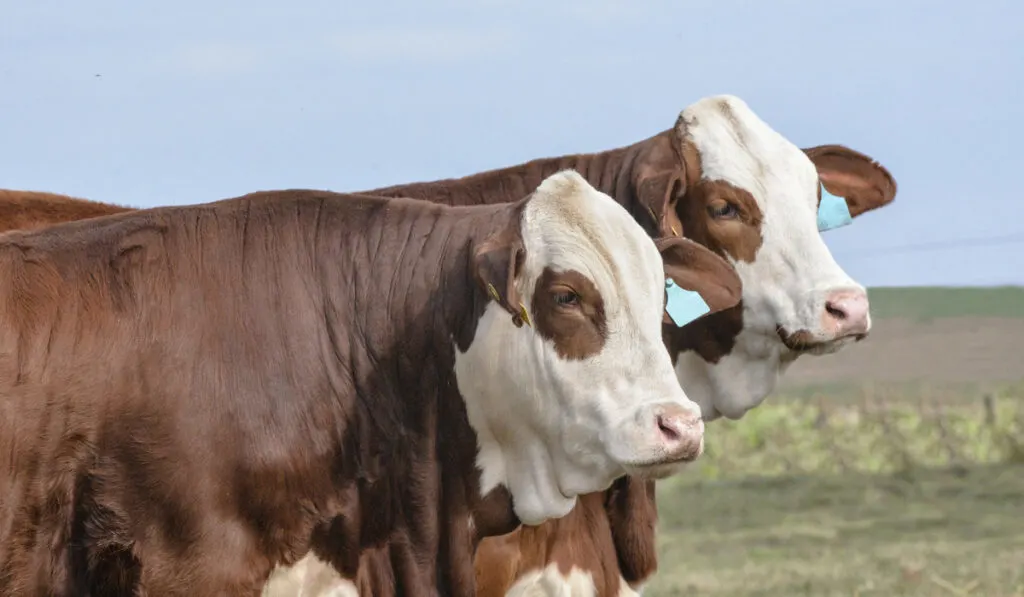
The Australian Braford Cattle originated in Australia. It was developed between 1946 and 1952 in a program designed to create cattle that could tolerate heat better.
Australian Braford Cattle have short red coats with white feet, heads, and underbellies. Some of their features – like humps and loose skin – are like those of the Brahman Cattle. Their color markings are like those of the Hereford Cattle.
Australian Braford Cattle are either polled or horned. They have oily skins with extra sweat glands that allow them to thrive in a hotter climate. However, they will also do well in colder climates.
The Australian Braford Cattle is medium to large-sized and slow-maturing. At maturity, the Bulls weigh around 2204 pounds, while cows weigh 1653 pounds.
Australian Braford Cattle are raised mainly for meat production. They are generally aggressive, especially the bulls. They are also hardy animals, heat resistant, tick resistant, and can handle harsh tropical conditions.
English Longhorn Cattle
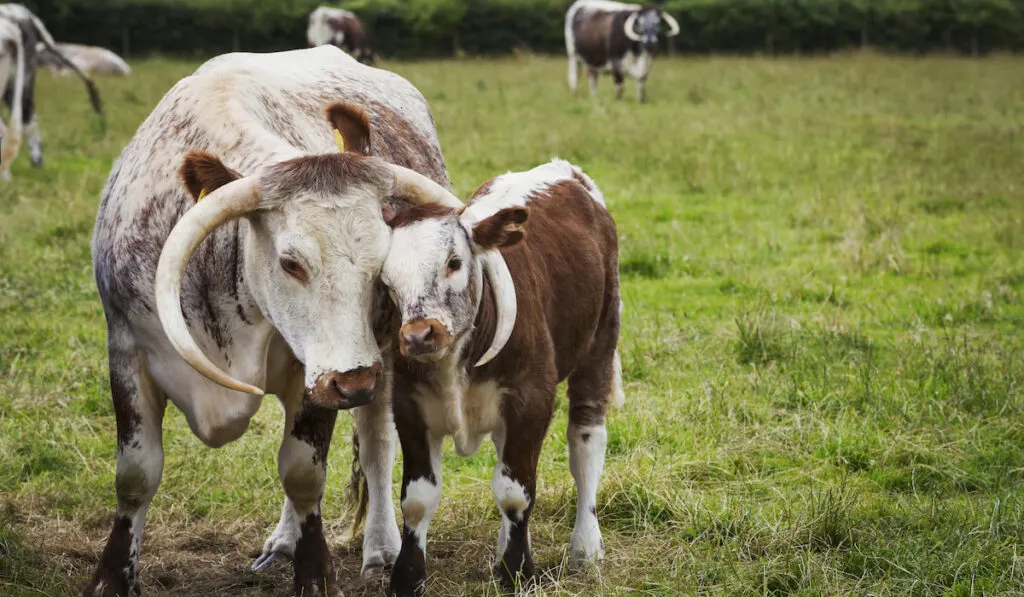
The English Longhorn Cattle is indigenous to Craven in North England. It is also known as Warwickshire, Longhorn, Leicestershire, Dishley, and Lancashire.
English Longhorn Cattle mainly have red, grey, or brown coats. They have a white patch on their tail, underbelly, and along their back. Both sexes of this breed have long horns that are usually curved downward.
English Longhorn Cattle are medium-sized. At maturity, English Longhorn Bulls weigh around 2204 pounds, while cows weigh 1102-1322 pounds. The average height of a male English Longhorn is 4.9 feet at the withers, while females are 4.2-4.5 feet at the withers.
English Longhorn Cattle are multipurpose. They are raised for both milk and milk production. In the past, they were also used for drafting purposes.
English Longhorn Cattle are healthy animals with long lifespans. They are also easy to manage, docile, and friendly animals.
Hereford Cattle
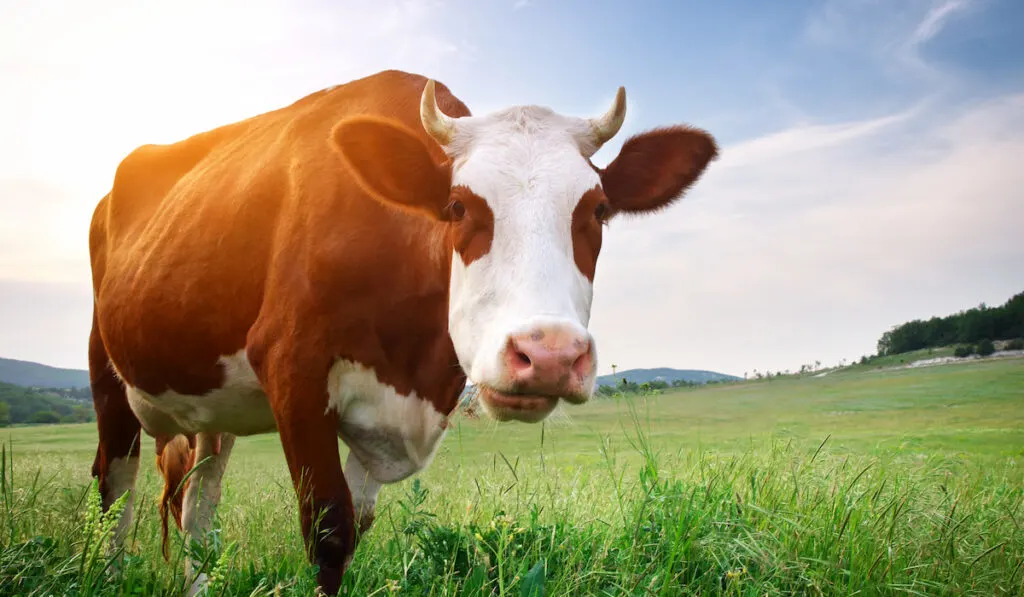
Although the origin of the Hereford Cattle is a bit uncertain, many agriculturalists agree they descended from a large Welsh breed and small cattle of Roman Briton. They are named after Herefordshire County, which is a historic agricultural region in England.
Hereford Cattle have red to red-yellow coats with white underlines, faces, dewlaps, and crests. Some Hereford Cattle also have white markings and flanks below their knees and hooks. They are smooth, trim, and muscular.
Hereford Cattle typically come with short, thick horns that curve downwards. But there is a polled variation of this breed in the UK and North America.
Hereford Cattle are large-sized and fast-growing. At maturity, the bulls weigh an average of 1800 pounds, while cows weigh around 1200 pounds.
Hereford Cattle are raised for meat production. They are docile, easy to manage, long-lived, and have excellent foraging abilities.
Beef Shorthorn
Beef Shorthorn Cattle are a dual-purpose breed from the 18th century. They are native to the Northeast of England. Although they were developed as dual-purpose breeds, certain bloodlines of this breed always stress one quality over the other.
Beef Shorthorn Cattle usually have roan, red or white coats. They can be horned or polled, and they have good limbs with few problems.
Beef Shorthorn Cattle are large-sized. At maturity, the bulls weigh an average of 2204 pounds, while cows weigh around 1763 pounds. They typically weigh more than their dairy counterparts, the Milking Shorthorn Cattle.
As a dual-purpose breed, Beef Shorthorns are reared for both meat and milk production. They are highly adaptable and can thrive in a wide range of environments. Beef Shorthorns are easy to handle, disease-resistant, docile, and have long lifespans.
Simmental Cattle
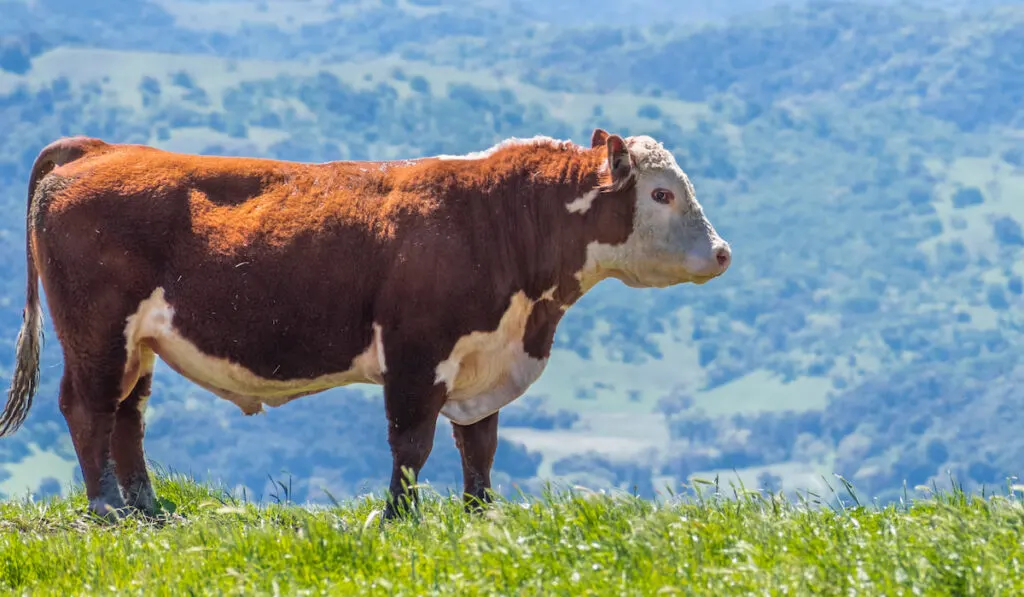
Simmental Cattle have a long history dating back to the Middle Ages. This versatile cattle breed originated in the valley of Simme River in western Switzerland, which is where they also got their name.
The Simmental Cattle also goes by different names in various parts of the world. For instance, it is called Simmentaler in Namibia and South Africa. In Argentina, it is called Fleckvieh Simmental.
Their coat comes in several colors, including gold and red & white. For the red and white variation, the white is either in clearly defined patches or evenly distributed. However, the color of a Simmental Cattle may also vary depending on the type and country.
Most Simmental cattle have pigmentation around their eyes that helps reduce the risk of eye problems. They are either polled or horned. The ones with horns have their horns turned upwards. They also have heavy dewlaps, good muscling, and large frames.
Simmental Cattle are large-sized. At maturity, the bulls weigh an average of 2866 pounds, while cows weigh around 1543-1984 pounds. The average height of a Simmental Bull is about 4.9-5.2 feet at the withers, while cows are about 4.4-4.9 feet at the withers.
Simmental Cattle are versatile animals. They are reared for both meat and milk production. However, there are several variations of this breed, and each one has a specific purpose. In the past, they were used for draft purposes. But these days, they are rarely used for that.
Simmental Cattle are hardy, and they can adapt to almost any climate. They are also easy to handle, have good grazing abilities, and excellent feed conversion.
Resources
- https://www.thecattlesite.com/breeds/beef/9/belted-galloway/
- https://www.thecattlesite.com/breeds/beef/61/english-longhorn/
- https://www.thecattlesite.com/breeds/beef/16/beef-shorthorn/
- https://www.roysfarm.com/belted-galloway-cattle/
- https://www.roysfarm.com/hays-converter-cattle/
- https://www.roysfarm.com/australian-braford-cattle/
- https://www.roysfarm.com/english-longhorn-cattle/
- https://www.thecattlesite.com/breeds/beef/14/hereford/
- https://www.roysfarm.com/shorthorn-cattle/
- https://www.roysfarm.com/simmental-cattle/
